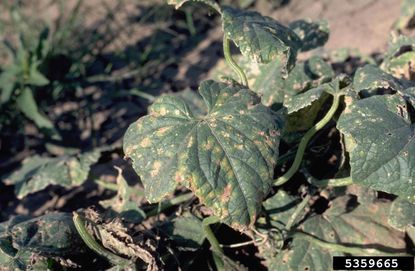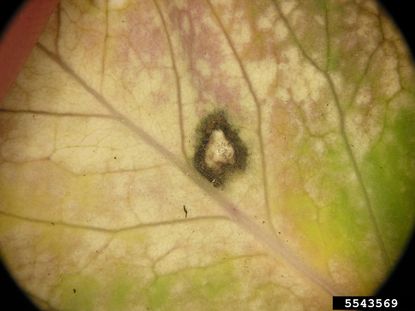Plant Diseases
Identifying plant diseases is the first step in treating the problem. There are many types of diseases that affect garden plants, leaving many gardeners scratching their heads. By using the following information, you can learn how to go about identifying plant diseases for effective disease control. Many garden disease problems can be alleviated simply by practicing good growing conditions. Yet, even in the best of circumstances, garden diseases happen. But with a little know how, you stand a better chance of treating these garden disease problems early on.
-
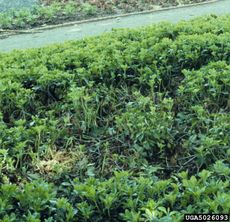
What Is Volutella Blight: Learn About Volutella Blight Control
Also known as leaf and stem blight, volutella blight is a destructive disease that affects pachysandra plants and boxwood shrubs. Early diagnosis and vigilant plant care are the keys to volutella blight control. This article will help.
By Mary H. Dyer
-
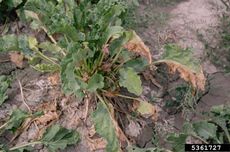
Fusarium Wilt Disease: Tips For Controlling Fusarium Wilt On Plants
There is a fungus among us and its name is Fusarium. Fusarium fungus can survive indefinitely, affecting any crop or plant that is contaminated by the soil. Find out how to protect and treat your plants in this article.
By Bonnie L. Grant
-
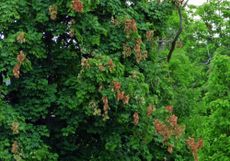
Reasons Why New Growth Is Dying
When the new growth on your plants starts to wither and die, you know you're in trouble. Read this article to better understand what's going on with your plants and find out if the problem is serious.
By Kristi Waterworth
-
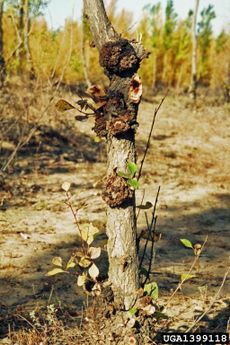
Plants Affected By Crown Gall: Tips On How To Fix Crown Gall
Before you decide to start crown gall treatment, consider the value of the plant you are treating. To eliminate the bacteria and prevent the spread, it?s best to remove and destroy diseased plants. Learn more here.
By Jackie Carroll
-
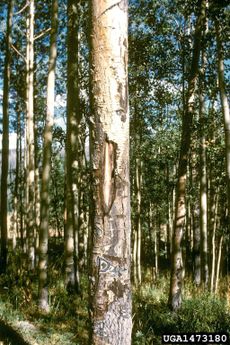
What Is Cenangium Canker: Managing Sooty Bark Canker On Trees
Diagnosing plant ailments is crucial to plant management and health. Cenagium canker of trees is one of the more insidious diseases. What is Cenagium canker? Click this article for tips on recognizing, treating, and managing sooty bark canker.
By Bonnie L. Grant
-
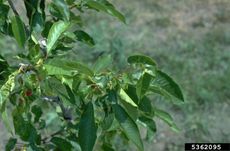
Cherry Leaf Roll Control – Tips For Treating Cherry Leaf Roll Virus
Although ‘cherry’ is included in the name, cherry leaf roll disease affects many plants. The virus can affect more than 36 plant families, and cherry leaf roll symptoms and damages are different per group. For tips on recognizing and treating cherry leaf roll, click here.
By Bonnie L. Grant
-
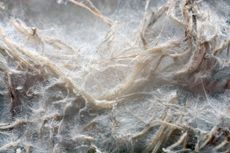
Problems With Plant Roots: Why Do My Plants Keep Dying In The Same Spot
One of the most common issues for growers is when all plants suddenly start dying. The reason likely has to do with problems with the plant roots. Plant root problems run the range from the most simplistic to more dire explanations. Find additional info here.
By Amy Grant
-
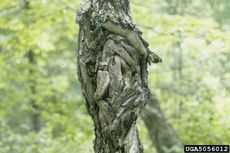
Nectria Canker Treatment – What Causes Nectria Canker
Nectria canker on trees is a fungal infection. If a tree is healthy, it can typically recover. Weaker trees may get girdled and ultimately die. Know the signs of nectria canker, how to prevent it and what to do if you see it with help from this article.
By Mary Ellen Ellis
-
Charcoal Rot Treatment – Managing Cucurbits With Charcoal Rot Disease
One fateful day, ‘charcoal’ took on a different meaning when I my cantaloupes had developed charcoal rot. My fond memories of charcoal were just as tainted as my cantaloupe plants. So what is charcoal rot disease, you ask? Click this article to learn more.
By Shelley Pierce
-
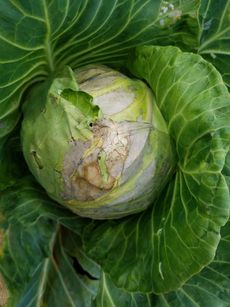
What Is Black Rot Of Cole Crops: Learn About Cole Vegetable Black Rot
Black rot on cole crops is a serious disease that can decimate an entire crop. How then can cole crop black rot be controlled? Click this article to find out how to identify the symptoms of cole vegetable black rot and how to manage black rot of cole crops.
By Amy Grant
-
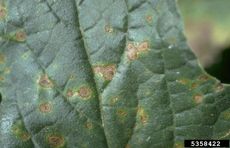
Cucurbit Alternaria Leaf Spot: Treating Leaf Blight Of Cucurbits
Everyone knows the old adage: April showers bring May flowers. Unfortunately, one disease that thrives in the warmth of midsummer that follows wet spring weather is alternaria leaf spot on cucurbits. Click here for information on leaf blight of cucurbits.
By Darcy Larum
-
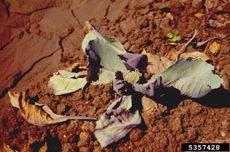
Fusarium Yellows Of Cole Crops: Managing Cole Crops With Fusarium Yellows
Fusarium yellows of cole crops is an important disease which can cause huge economic loss in commercial settings. It causes wilting and often plant death. Control of cole crop fusarium yellows can help prevent its spread. Learn more in this article.
By Bonnie L. Grant
-
Cole Crop Wire Stem Disease – Treating Wire Stem In Cole Crops
Good soil is what all gardeners want and how we grow beautiful plants. But harbored in soil are many dangerous bacteria and damaging fungi that can harm crops. In cole crops, wire stem disease is occasionally a problem. Click this article to learn more.
By Bonnie L. Grant
-
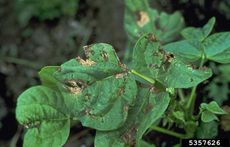
Phoma Blight Disease: How To Stop Phoma Blight In Plants
Phoma blight in plants is particularly damaging to vinca groundcover. There are some preventative measures you can take in the garden and things you can do if you already see the infection. Click on the following article for more information.
By Mary Ellen Ellis
-
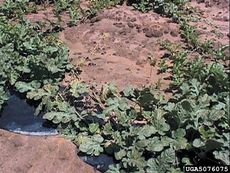
Fusarium Wilt Of Cucurbits – Dealing With Fusarium Wilt In Cucurbit Crops
Fusarium is a fungal disease that afflicts cucurbits. Several diseases are the result of this fungus, each crop specific. The following article contains information on recognizing fusarium symptoms in cucurbits and managing fusarium wilt in cucurbit crops.
By Amy Grant
-
What Is Internal Tipburn: Managing Internal Tipburn Of Cole Crops
Internal tipburn of cole crops affects such foods as cabbage, broccoli, cauliflower and Brussels sprouts. Learn the signs of internal tipburn so you can save your cole crops from this potentially damaging condition. This article will help.
By Bonnie L. Grant
-
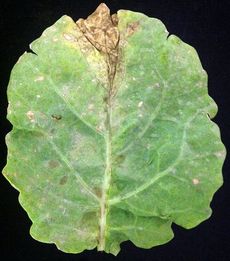
Downy Mildew Of Cole Crops – Managing Cole Crops With Downy Mildew
If your favorite cole crops, like broccoli and cabbage, come down with a case of downy mildew, you may lose your harvest, or at least see it greatly reduced. Downy mildew is a fungal infection, but there are steps you can take to prevent and treat it. Learn more here.
By Mary Ellen Ellis
